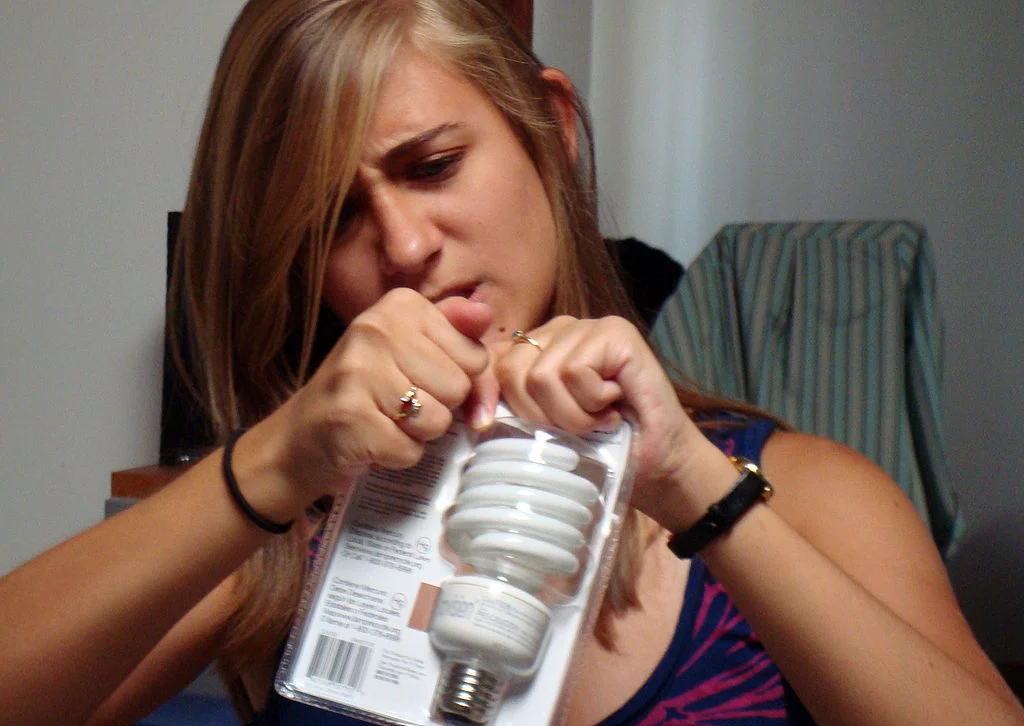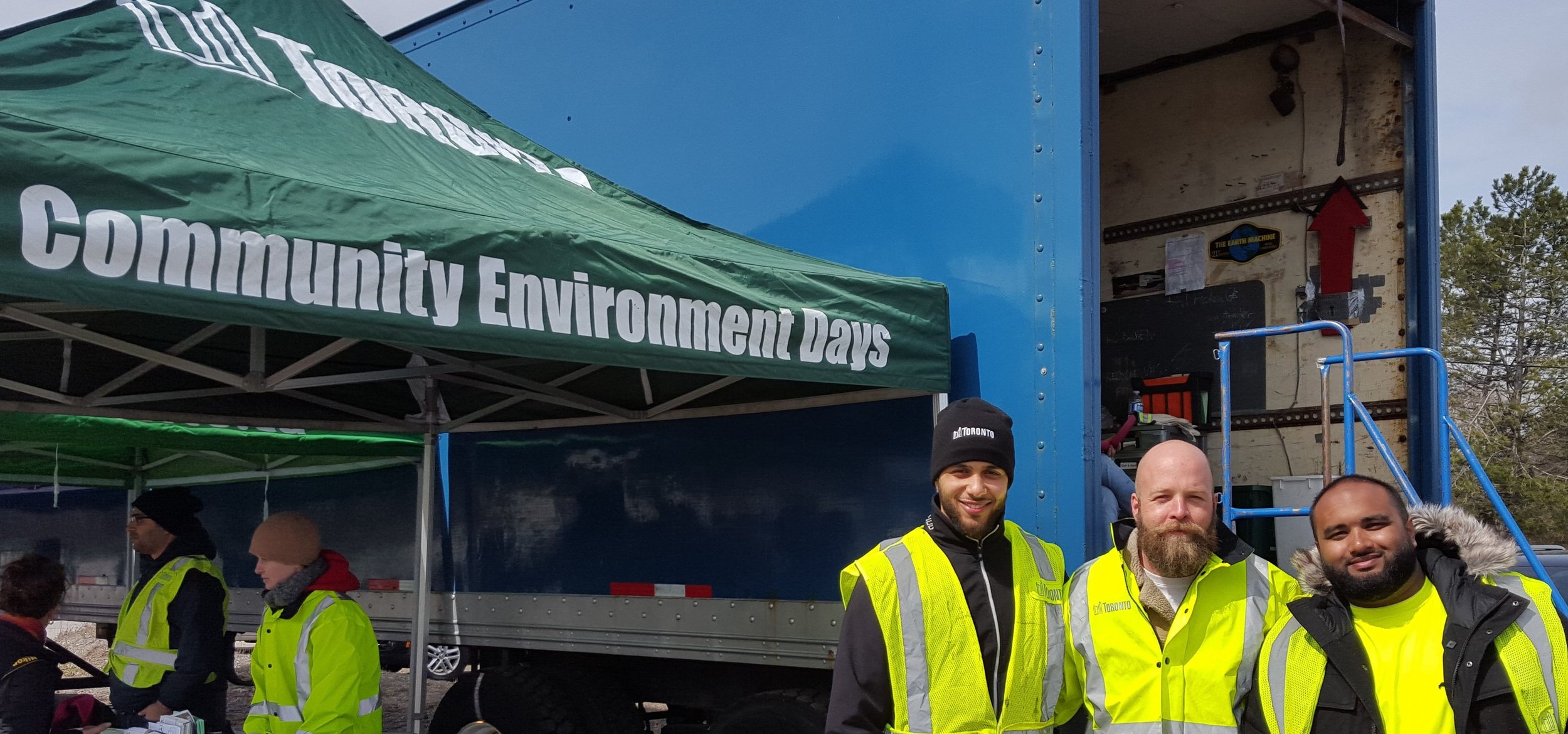The City of Toronto has to deal with mountains of garbage that is generated each day. On a whole they handle this task primarily through our recycling system but recycling is very costly. The real answer, of course, is not to generate the waste in the first place.I bought a cordless telephone set and when I opened the package I discovered that the set itself occupied about half of the box. The rest of the package was bolstered by folded cardboard. The big glossy package was a marketing tool designed to give the illusion that you were getting something more for your money.The Province of Ontario tried to deal with the disposal of electronic waste, and they failed miserably. Electronic waste is piling up more rapidly as technology evolves. The question is, who should pay to dispose of obsolete electronics? The obvious answer is the manufacturers who generate the waste in the first place. But that’s not the reality.The government let manufacturers seize control of the process by setting up Waste Diversion Ontario -an industry funded and controlled body. The result was that in July of 2010 we were hit with the ECO fee (disposal fee) that was to be used to cover the cost of recycling obsolete electronics. The ECO fee was a hidden charge that ranged from seven cents for a cell phone to $40 for a large TV. It didn’t appear on the price tag but you got walloped with it at the cash register after you paid the HST. The manufactures had successfully transferred the costs from themselves to you, the consumer.Public anger was so intense that the Ontario government pulled back the ECO fee. They immediately solved their problem by downloading the costs of disposing of electronic waste onto the backs of municipalities. You still pay the fee but now it’s hidden. Now you pay through your property taxes.Setting packaging standards is the responsibility of the federal government. Given the influence that manufacturers wield, efforts to regulate packaging at the federal level are doomed to fail.Toronto is the largest consumer market in the country. I proposed that the city enact a bylaw that required every retail outlet over 3,000 square feet to establish a well signed, well equipped packaging removal area where customers can remove and leave the packaging. If most customers were encouraged to remove and leave the excess packaging at the store, the retailers would turn to the manufacturers and say: Unless you reduce your packaging we are not going to carry your product.Would it work? When the city had a 5 cent charge on plastic shopping bags their use was reduced by a whopping 88%.You can do your bit too. Don’t take your groceries home in the store’s cardboard boxes and when you make a purchase remove the packaging and leave it at the store. They might begin to understand that society doesn’t have to generate a mountain of waste.
School Trustee Howard Kaplan Dies at 72
Flags in local schools were flown at half-mast when news broke. Howard Kaplan will be remembered as an activist in the local community that cared deeply about public education and issues of equity. He was first elected TDSB Trustee in 2010 and was re-elected in 2014. He fought for early childhood education programs, equity in education and was a very active member in the community.
Howard became ill recently and was waiting for a liver transplant.
He wrote on Facebook in November:“I've been diagnosed with an auto-immune condition: IgG4-related sclerosing cholangitis. Look it up, it's too complicated to explain it here. What it means is that I will eventually need a new liver. I am currently undergoing a battery of tests to see if I am a suitable candidate for a transplant: I have to be healthy enough -- good heart, lungs, kidneys, etc; and I have to be sick enough -- my liver has to be really bad. Accordingly, my energy level fluctuates day-by-day. I don't know from one day to the next how much work I can do. It will get worse as time goes on until I get a new liver... if I'm a suitable candidate. As far as my work as a Trustee goes, I'm doing what I can, when I can. Staff are aware of my condition, and are taking on some of my constituency work.”
On behalf of The Downsview Advocate we send his family our deepest condolences during this difficult time -he was a great man that did very good things for this community.
Innovative Fish-run Organic Farming Project on Hold at Downsview Park
An organic and zero waste farming project, driven by 500 lbs of Tilapia fish, is currently on hold at the corner of Keele St. and Sheppard Ave.
Waiting on a long-term lease from Downsview Park, Fresh City Farms seeks to resume the largest scale cultivation of local food in the GTA - using fish excrement.
In a partnership with WaterFarmers Aquaponics, the Aquaponics system, at Fresh City is a closed water system that recirculates water between a fish tank and a floating vegetable bed. Nutrients from fish waste are feed to the plants and the plants in turn filter the water for the fish.
Issues with current agricultural practises like scarcity of freshwater, decline in soil fertility, and extreme weather aren’t an issue with this innovation and it is also beneficial for community building, job creation and food education.
Who wouldn’t be interested to learn about a clean, no waste way to grow food near or at home. Not to mention using fish that you can eat if you wish. Quite the conversation starter.
Saving up to 90% of water compared to traditional agriculture, aquaponics only needs a 10% volume top up to the total water volume each week according to Arvind Venkat, the Chief Scientist, Founder and CEO of WaterFarmers. Not only that, but it is close to one of the “purest food production technologies in the world”, as stated on their website.
“Vegetables grow up to 50% faster than soil farming” says Arvind.
Using the digestive system of cold blooded animal to its advantage, the excrement produces a broad spectrum of nutrients compared to cow or horse manure. Unlike commercial farming which causes erosion and soil depletion, no additives, pesticides or fertilizers are needed within this closed loop system which uses 100% of what goes into it.
The WaterFarmers have projects in over 10 different countries including Hong Kong, Turkey, Costa Rica and Indonesia. Aquaponics is said to be particularly useful for islands surrounded by salt water or areas with harsh climates experiencing extreme weather or drought.
Changes in soil temperature that would normally affect growing conditions are controlled in greenhouses.
That also means basil and cherry tomatoes are available in December - a surprise to those used to just having the choice of local Ontario root vegetables in the winter months.
The WaterFarmers seek to empower sustainable communities ranging from commercial and academic partnerships, down to helping you in your own home.
Visit www.waterfarmers.ca to learn more!
Hydro One: it’s not too late
Public meetings about Kathleen Wynne’s plan to sell-off Hydro One have been happening for almost a year now, yet they continue to fill up to capacity. These packed rooms are evidence of the overwhelming opposition to the Liberals’ plan to privatize this public asset.The room overflowed at a Jane Street Hub meeting in early March. Ontario NDP leader Andrea Horwath and MPP Jagmeet Singh listened and took note of the community’s concerns.One resident voiced her frustration with the already high cost of hydro, and her worry that it would go up even more if the Liberal plan moves forward. She explained that she only cooks on Sunday to take advantage of off-peak pricing, but her hydro bill is still too high.The truth about the many downfalls of selling Hydro One has been talked about for months now.Privatizing Hydro One will increase rates. Research on public vs. privately owned utilities has shown that customers of public firms pay lower prices for services (source: keephydropublic.ca). The less public ownership we have, the less control we’ll have and the less we’ll be able to turn to the Ontario Energy Board to stop rate increases.The loss of ownership also means the loss of revenue. Averaging $913 million in revenue per year since 2000, Hydro One is a reliable revenue source that we can’t afford to lose.Over 80 per cent of Ontario voters oppose the sale of Hydro One and as of December 2015, 194 of Ontario’s municipalities took an official stance against the sale. It’s clear that the movement to stop the sale continues to grow.Many people believe that it’s too late; that the deal has already been made. But this isn’t true. When asked what to say to those who think it’s too late, Horwath replied “It’s never too late, never give up.”“People want to do something about it. We’re giving people a voice,” Horwath said.The Liberals haven’t provided a timeline for their plan to sell. There’s still time to contact your MPP and have your voice heard.For more information and to sign a petition against the sale of Hydro One, visit:www.youpaytheprice.cawww.keephydropublic.ca
Improving community centres for greater youth engagement in North York
Part of the growth strategy to harness youth leadership skills is establishing community centres that aligned with their interests.
Despite the amount of time, financial resources and human capital invested in constructing and developing programs to meet the needs of youth, many publicly funded community centers are noticeably underutilized and underpopulated. Voicing their concerns are a number of high school students who participated in a youth engagement program organized by the Jamaican Canadian Youth Council (JCYC) and the Skills for Change organization.
The aim of this program was to first enable youth to communicate with different business organizations about their products and use the collected information to structure a business plan. And secondly, the JCYC used the space to liaise with youth to better understand their plights as a way to strategically plan how the organization can assist them with leadership skills.
During the breakout session various youth were asked to highlight an issue in their community and to articulate strategies to remediate the problem. Through their collaborative efforts several issues were highlighted such as the need to improve the current conditions of their existing community centre. They further expressed concerns about its inadequate usage, which they associate with the lack of maintenance and funding.
By pointing to the need for better community centers, it is hoped that leaders at the local government level will collaboratively work with youth and other constituents to understand the underlying factors that led to the poor state of these facilities.
While these ideas may perhaps be conceived as lofty goals, it is hoped that such transformational measures will foster an environment of excellence, where youth leadership capacities will be harnessed so that they, too, can continue to work with their peers, and other constituents to improve our communities.
YUM farmers market @ York University
Students and staff came to check out the YUM farmer's market outside the Scott Library at York University on Thursday March 31st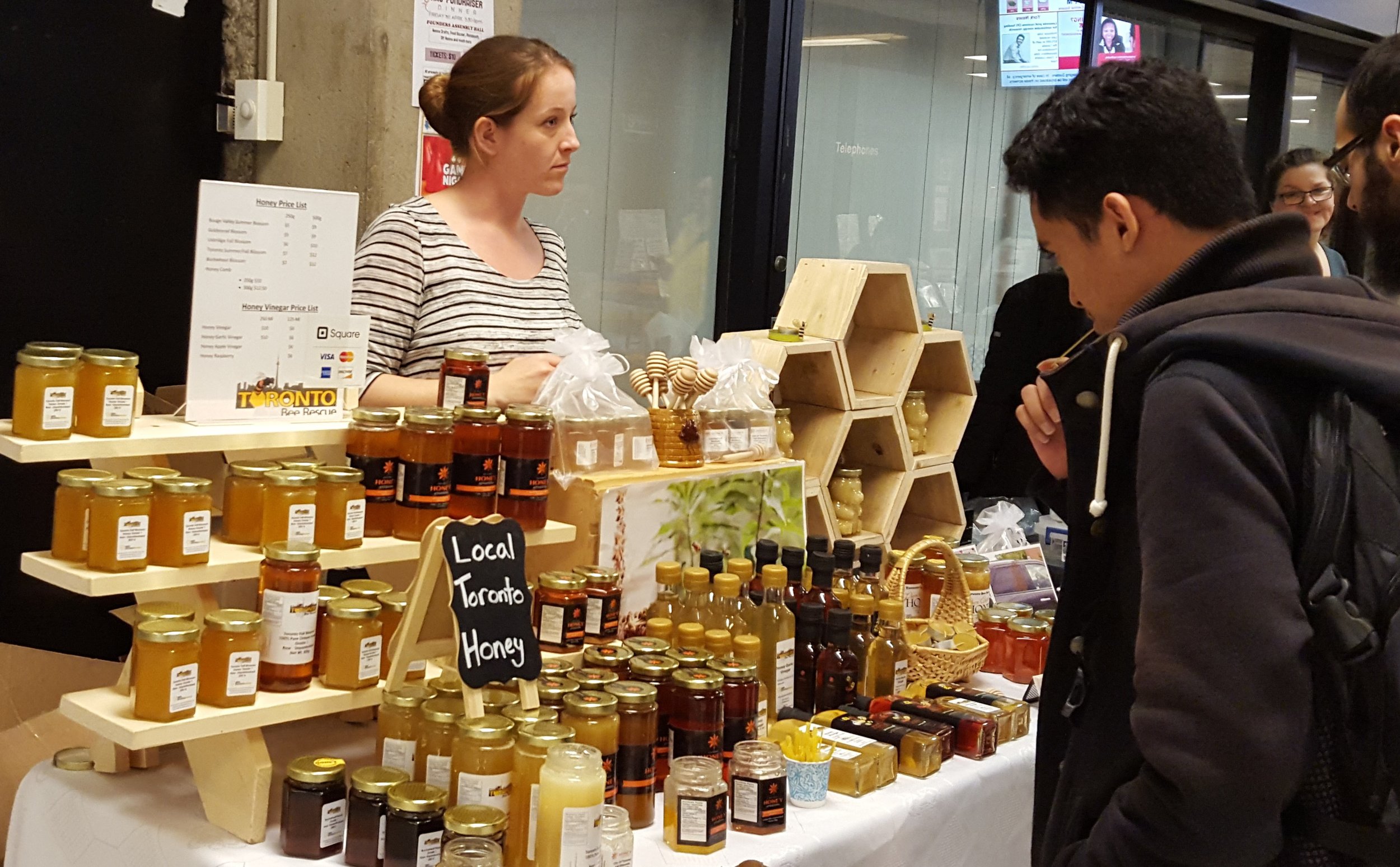
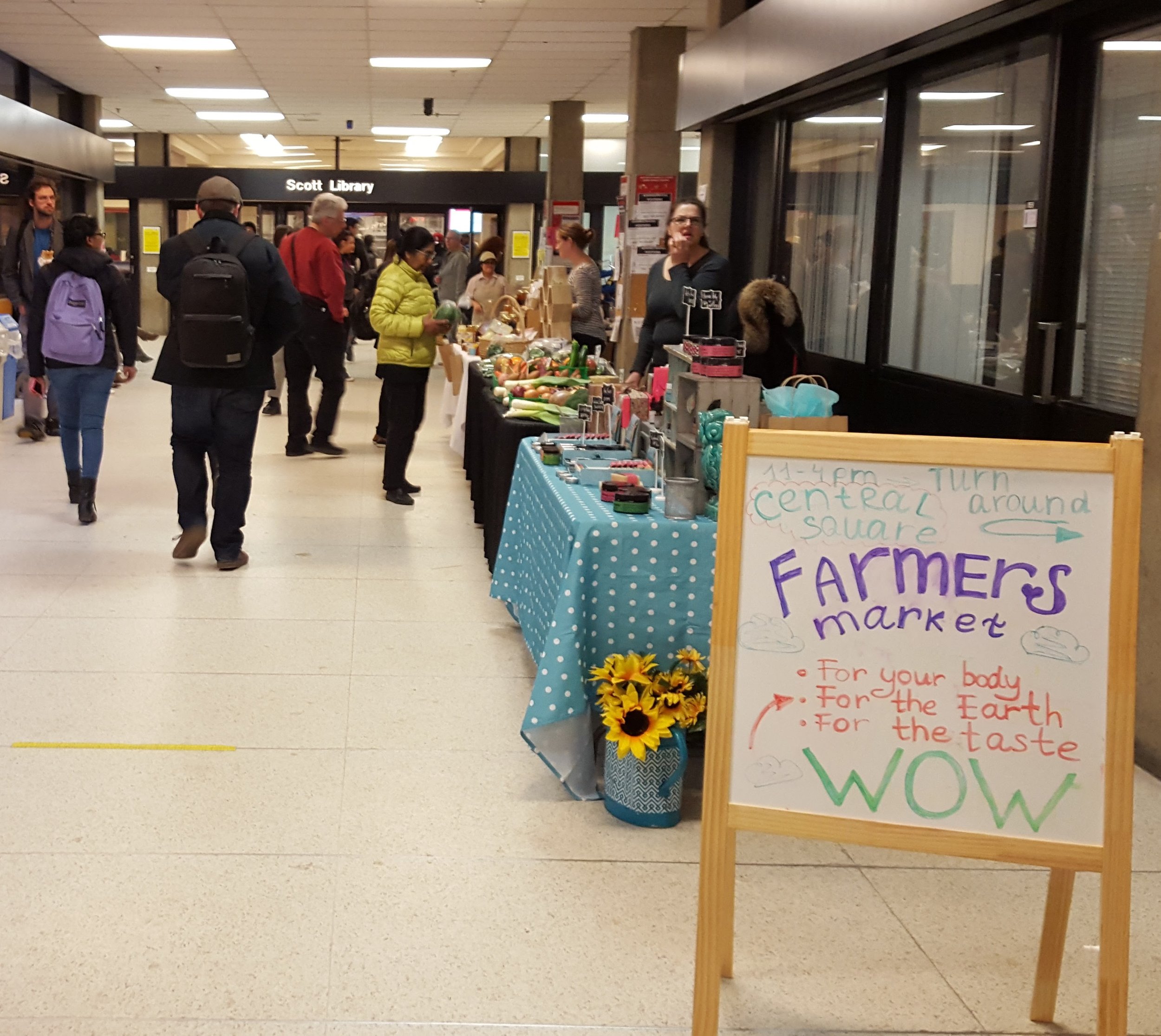
Ward 8 Environment Days
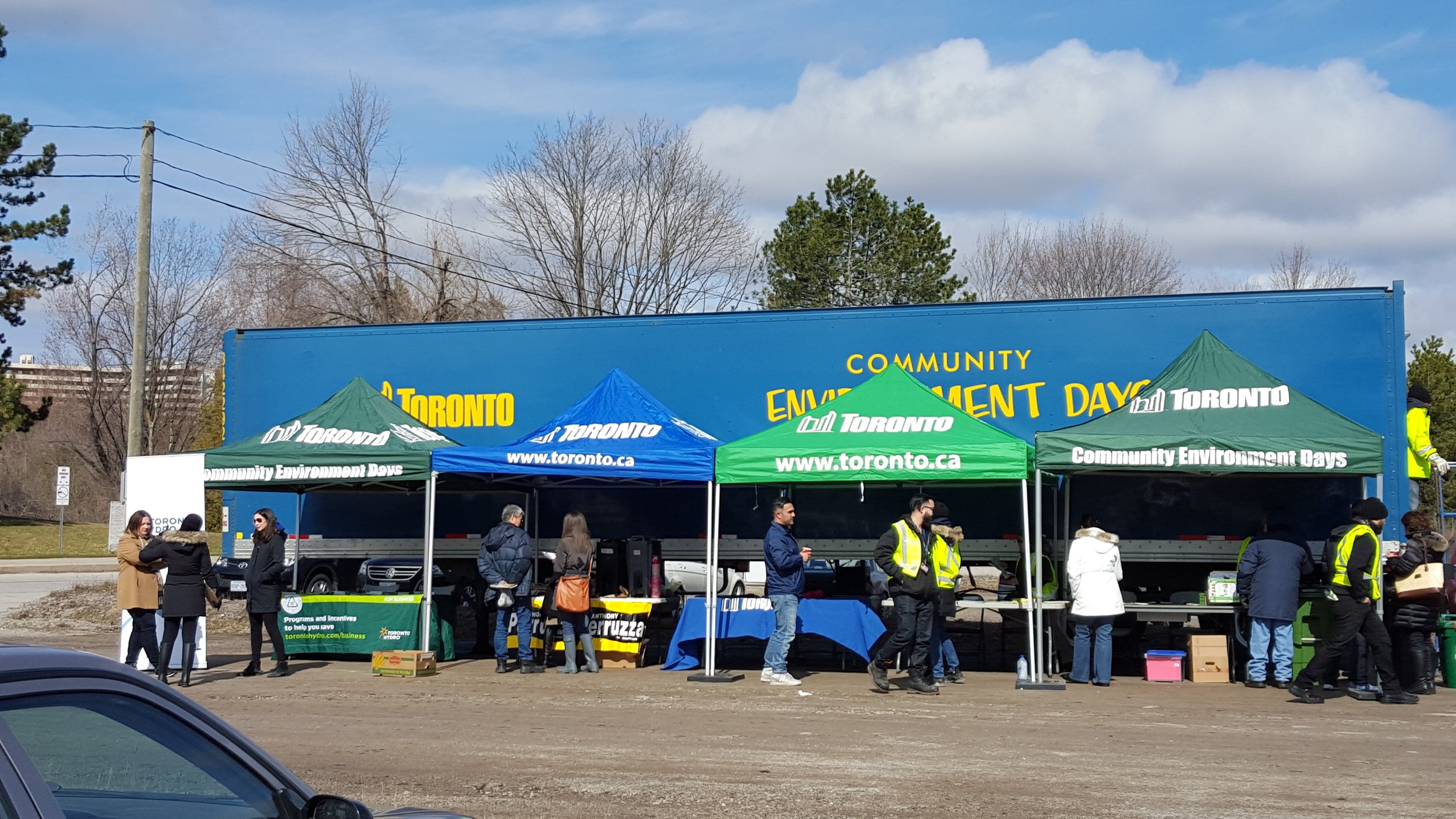
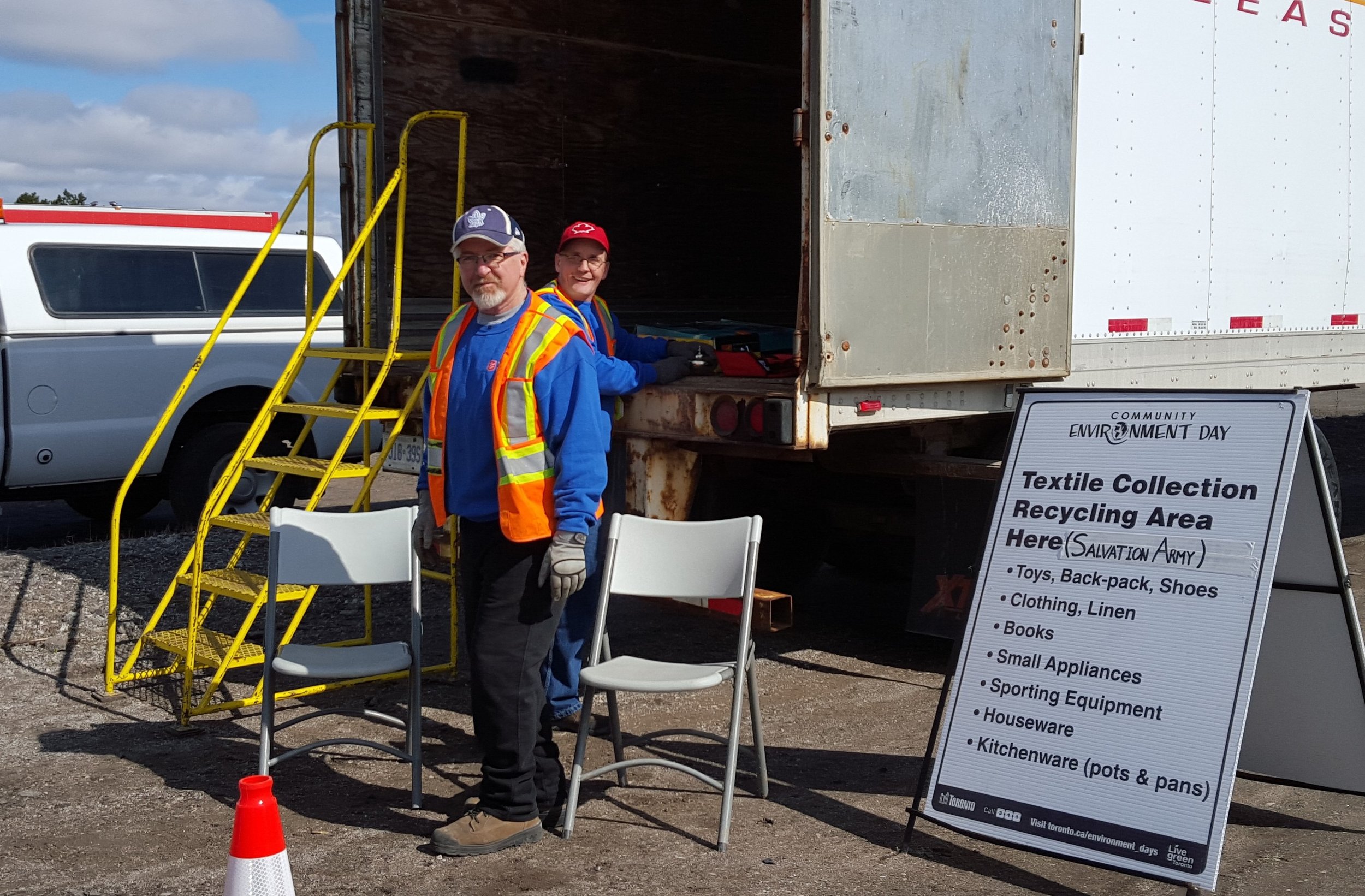
Everything is Free at the North York Really Really Free Market
If you happened to be hanging around the Driftwood Community Center on January 31st, you likely would have stumbled across what appeared to be an indoor Garage Sale.
What was actually going on, was the second North York Really Really Free Market. Downsview residents joined together at the community center with things that they didn’t need any more and left with a few things that they did.In hosting or attending a Really Really Free Market, or RRFM for short, the Downsview community was became a part of what is now a global movement. The RRFM movement began with markets being hosted in both Miami, Florida and North Carolina in 2003. Since then different markets have been hosted in places like Washington, Minneapolis, Russia, England, New Zealand and Toronto just to name a few.
The whole idea of the Really Really Free Market is based on the idea of a gift economy, in other words, you don’t need to give to get anything. You show up with items that are no longer needed in the hopes that someone else does. Or you can show up, look around and see if there is anything you need. It is also common that people show up to offer services or skills provided for free. These can be things like sewing skills, bands show up to play music, people giving out free massages or jokes.
The point of the markets is to encourage an anti-capitalist market system. Of course this sentiment is not surprising given that part of the original organizers of the movement were anarchist groups. You don’t have to be an anarchist, though, to be a fan of getting a bunch of free stuff and decluttering your own space!
The last North York RRFM happened in November and hopefully there will be another springing up in a month or so as the weather heats up. This is something to watch out for because the more people who show up to participate in an event like this, the more there is to offer and enjoy. As a sort of anti-establishment movement, it really does rely on the participation of others to make it as great as possible. So be sure to keep an eye out for the next one, it will be posted on our events page as soon as we hear any news of it at: www.downsviewadvocate.ca/events
Want to save some money and help the environment too?
You can do it by trading in your garbage container.
The entire system is designed to encourage you to pay less. After the great garbage debate of the 1980s, when our landfill site in Vaughn was filled up, Toronto Council searched long and hard for a place to put this city’s garbage. At one point we were shipping it to Michigan. When the city finally acquired its present site near London, Ontario, Toronto council realized that unless we could reduce the trash going to landfills we would very soon be looking for another dump and that was becoming increasingly harder and more expensive to do.That’s when we switched the present user pay system.
Now the less garbage you generate the less money you pay on your utility bill. To make it easier the city has been slowly adding more and more materials to the re-cycling stream. The recycling (blue bin) is free; wet waste (green bin) is free; you only pay for trash (grey bin). The difference between an extra-large grey bin and the smallest bin is $332.97. Just trading down from a large bin to a medium one will save you $158.66.
How do you do it? Easy. Call 311; give them your name and address and within two weeks the city will deliver the new bin to your home, remove the old one and reduce your utility bill. Just one warning; trading to a smaller bin is free but if you try to trade back up to a larger bin not only do you pay the higher utility bill but you pay a trade up fee of $21.22.
Happy Recycling!
The problem with a free ride
I am not a fan of Uber. In fact, the more I come to understand the concept of what Uber is, the more I dislike Uber, but let me explain why.
I was at the corner of Bathurst and Sheppard not too long ago. I went there to meet a friend for a coffee. And as I pulled into the coffee shop, there was this tent set up with this little table. And the roof of the tent said Uber. The tent had some four or five young people, and there was this young woman, very bubbly. She was recruiting people for Uber.
But I sat there for a few minutes, and imagine this: they were offering you a job and free gas! So I thought to myself “wow, how does it get better than that? Here they are on street corners offering you a job! And free gas as well!”
Well, it then dawned on me that Uber is no more than an app based recruitment agency! That is really their function. That is at the core of who they are.
You know what the lifespan of an Uber? Three months. And the wage? $11.00 per hour (Source: http://citypaper.net/uberdriver/) . That’s not a job. As a worker, you are better off delivering pizzas or working at Wal-Mart. More job security and better pay.
You know who the real winner in all of this is? It’s not even the consumer. Uber only cares about the bottom line. Cases like a man who got charged over $1000 for a 40 minute ride are not the exception (Source: http://montreal.ctvnews.ca/uber-customers-taking-legal-action-for-expensive-new-year-s-eve-rides-1.2729078). The winner is Uber. It’s the recruitment agency. They want to monopolize the industry so that they can charge whatever they want. When they can they try to gauge employees and consumers. If the competition was gone, your Uber ride would go through the roof.
For the workers, the drivers, they already had a tough time. There’s shift drivers, there’s agents, there’s brokers, there’s license-plate owners and people who own cars, it was never a playing field. The drivers were overworked and not well paid in general. Uber is no better and no different than any temp agency, but they are not even at the bad boss level. A bad boss may want to fire you without reason. Uber claims they have no employees driving cars. That they are just an app. What drivers get from this deal is little money, no future, and a little free gas. They end up paying for the vehicle, the insurance and yes, they pay for the gas too.

